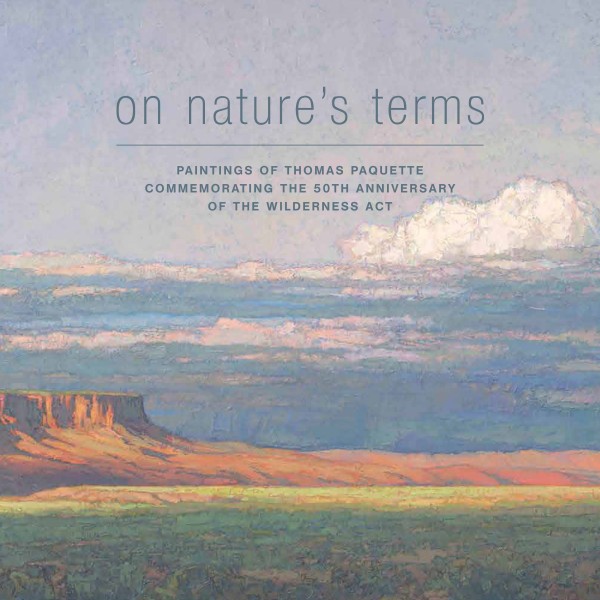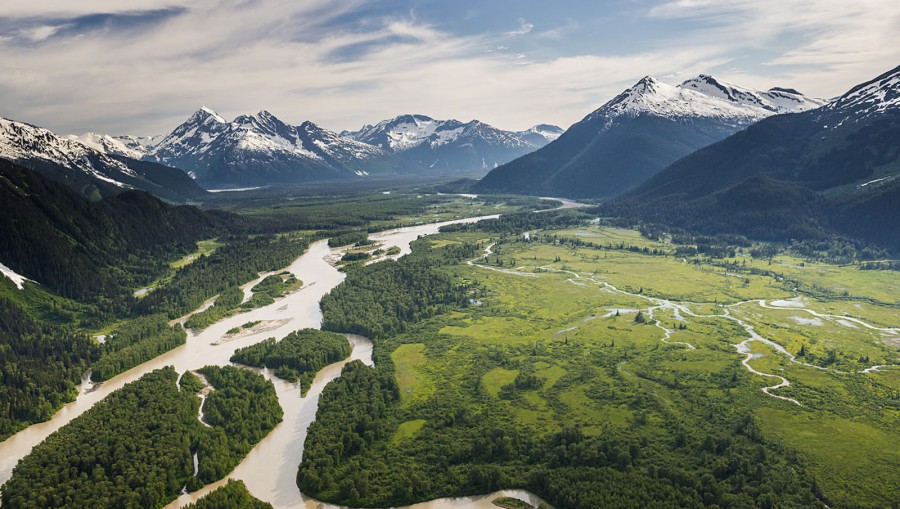
Thomas Paquette, a painter from PA, spent three years on the road visiting wilderness areas across the country. His exhibition, “on nature’s terms” commemorates the 50th Anniversary of the Wilderness Act. Thomas was kind enough to share his book with us, and answer a few questions about his relationship with Wilderness:
How does wilderness inspire your work?
When I paint a landscape I think not of what it looks like, but how it acts. I am much more concerned with giving my paintings the feeling of life and process, as though it were a living extension of the subject. The slow grind of geology is my best teacher when paintings take years to complete. When I get to a point where the only good solution is to scrape off hours, days, or weeks of work and begin again, I borrow a lesson from the regeneration of forests that comes after a fire or even a landslide. New-fallen snow. I let the paint grow where other artists would prune, only because I would maintain that most times, it grows best growing wild.
Why do you paint wilderness areas?
I have always been interested in the natural world, and even studied to be a naturalist for a while. It’s an obvious fact that there is literally nothing I could choose to paint from experience that is not of this earth. But it is those places where humanity has least impact that have always struck me as holding the most significance. They are for me places that hold mysteries to be explored, places that hint of our deepest roots. I found myself going further into the process of the earth and life for my inspiration, leading me of course to wilderness areas. And when the fiftieth anniversary of the Wilderness Act was coming up, I felt focusing exclusively on designated wilderness areas was well worth spending a couple years on anyway. I marveled that we can sometimes end up on the good side of Thoreau’s equation: “A man is rich in proportion to the number of things he can afford to let alone.”
Do you have a favorite wilderness area? Which one, and why?



